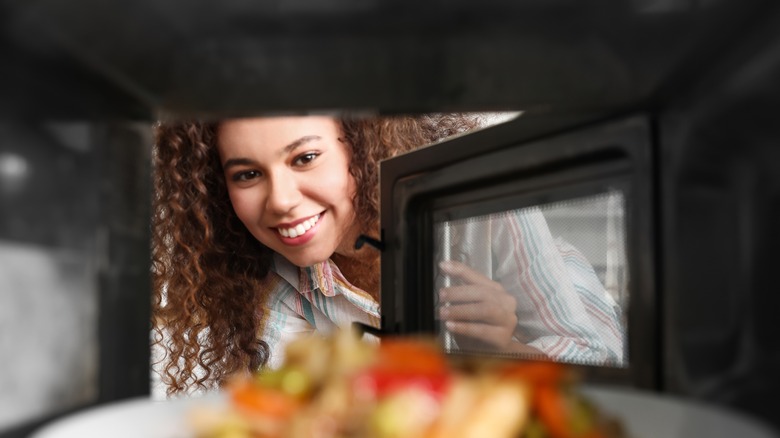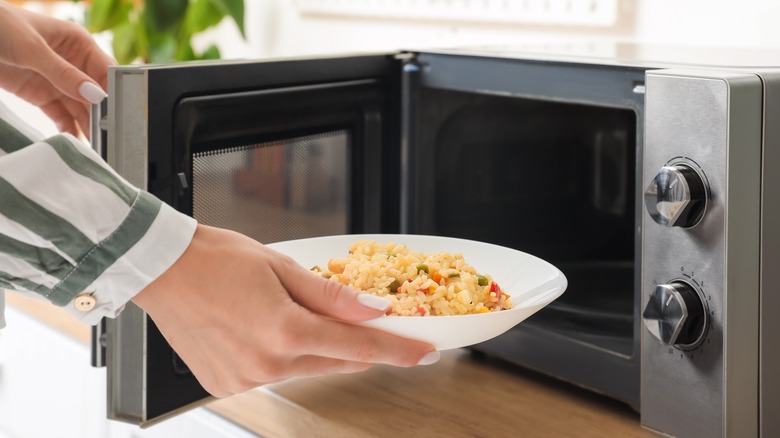Can You Kill Food Contaminants By Reheating In The Microwave?
You prepare a meal, cook it to the correct temperature, store the leftovers in the refrigerator, and assume that all is safe. However, even food that's cooked and properly stored can become contaminated by other foods. There's a risk of bacteria growth when something uncooked drips into it in the refrigerator. However, the microwave, if used properly, can help kill some food contaminants when reheating. You may be thinking, "I grew up on leftovers and never once landed in the hospital!" What's the deal?
Proper reheating may help kill some of the contaminants if you heat to at least 165 degrees Fahrenheit. This reheating helps prevent any existing microbes and bacteria from continuing to multiply. Still, it may not fully destroy these toxins. If you reheat foods in the microwave, you need to aim for a high enough temperature, which can take some time and high power. Once contaminants are in your food, even high temperatures are not enough to completely eliminate the associated health risks. Does that mean you cannot eat leftovers? It all comes down to doing everything you can to stop those pathogens from getting into the food in the first place, and that means avoiding common food storage mistakes.
Proper cooking and storage make the difference
To better understand the risks, consider a bowl of pasta. Many people wouldn't think that something like grain can cause foodborne illness, but it can if treated improperly. Specifically, Bacillus cereus is one bacteria that can target this type of food and lead to food poisoning. What do you do with the pasta so you can eat it the next day?
The time between cooking and storing it should be as short as possible to prevent as much exposure as possible. Aim for two hours or less. If the pasta is still warm, place it into a shallow container, and put it in the refrigerator until it cools down. Then, top it with an airtight lid. Always store your leftovers in a container with an airtight lid with as little excess room as possible. Be sure your refrigerator stays at 40 degrees Fahrenheit or lower in all situations. This helps prevent the bacteria from growing, but you'll still want to aim for reheating it to at least 165 degrees Fahrenheit before consuming it. Remember, there are bacteria on your hands, cutting boards, and dishes. The less exposure, the better.

